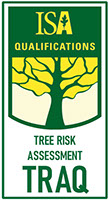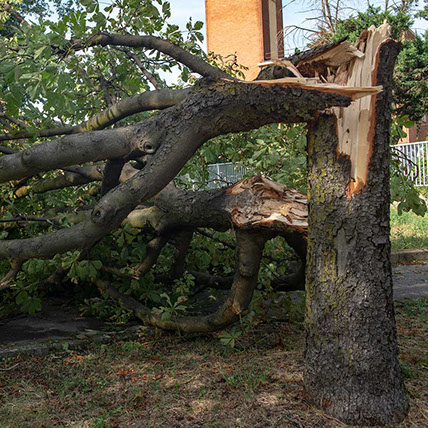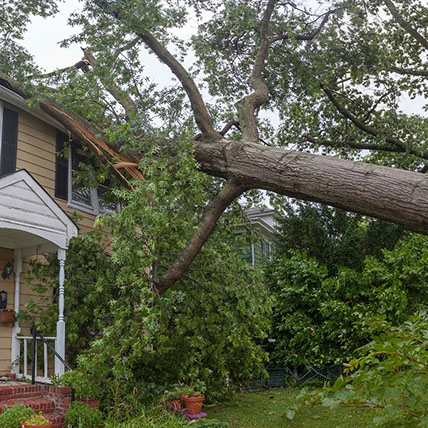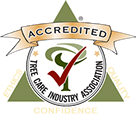The science of preserving nature since 1964
Tree Risk Assessment:
Identifying Hazardous Trees Before Summer Storms
Summer storms in the Northeast can arrive suddenly and pack a serious punch — bringing high winds, heavy rain, lightning, and even hail. These storms not only threaten power lines and property, but they also test the structural integrity of the trees in your landscape. That’s why it’s so important to assess your trees now — before the next big storm rolls through.
Every year, falling limbs and toppled trees cause significant damage to homes, vehicles, fences, and even people. In many cases, the warning signs were visible long before the tree came down. Dead limbs, cracked branches, decayed trunks, or leaning trees often go unnoticed until it’s too late. A proactive inspection by a Certified Arborist can identify these hazards early and help you take steps to reduce the risk.
Watch for clear warning signs of tree trouble: dead wood in the canopy, large hanging or broken branches — often referred to as 'widowmakers' — as well as mushrooms, conks, or other fungal fruiting bodies (such as Kretzschmaria) growing on the trunk or at the base. Bleeding sap, discoloration, and visible splits or cracks in major limbs are also indicators of potential structural issues. Trees with multiple trunks or tight, V-shaped branch unions are especially vulnerable to failure during high winds. Keep in mind that even trees that appear healthy may have hidden defects, particularly if they’ve experienced storm damage or nearby construction in the past.
Certain species are more vulnerable to storm damage than others. Soft-wooded trees like silver maple, willow, and Bradford pear are known for their tendency to break apart under stress. Shallow-rooted trees in saturated soils can also be at risk of uprooting during heavy rain and wind. Older trees with dense canopies may become top-heavy in the summer months and require selective pruning to reduce wind resistance.
 At Almstead, our Certified Arborists with Tree Risk Assessment Qualification (TRAQ) conduct thorough tree risk assessments, including visual inspections and, when needed, internal evaluations using tools like sonic tomography or resistograph testing when we suspect considerable internal decay. We look for both immediate hazards and long-term concerns, and can recommend mitigating options such as corrective pruning, cabling and bracing, or, if necessary, strategic removals to prevent damage and improve safety.
At Almstead, our Certified Arborists with Tree Risk Assessment Qualification (TRAQ) conduct thorough tree risk assessments, including visual inspections and, when needed, internal evaluations using tools like sonic tomography or resistograph testing when we suspect considerable internal decay. We look for both immediate hazards and long-term concerns, and can recommend mitigating options such as corrective pruning, cabling and bracing, or, if necessary, strategic removals to prevent damage and improve safety.
Mature trees that are not on a regular maintenance program often develop over-weighted canopies. In such cases, we may recommend pruning methods to naturally reduce canopies by making selective branch end reduction cuts to reduce loads and drag and help lower the risk of structural failure.
Being proactive about tree care before storm season not only protects your property — it also helps preserve valuable trees that might otherwise be lost. With the right care, many trees that pose a current risk can be stabilized or made safer without removal.
If you haven’t had your trees professionally evaluated in the past few years, now is the ideal time. A pre-storm season inspection from Almstead can give you peace of mind — and help keep your landscape, and your home, safe this summer.



LOCATIONS:
Lower Westchester County, NY and New York City
58 Beechwood Ave, New Rochelle, NY 10801
914-576-0193
Upper Westchester (North of I-287)
15 Broadway, Hawthorne, NY 10532
914-741-1510
Fairfield County, Connecticut
547 Hope Street, Stamford CT 06907
203-348-4111
Bergen & Passaic Counties, NJ
504 High Mountain Road, North Haledon, NJ 07508
973-636-6711
Contact us for a Free Consultation
